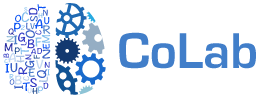Available internships/theses:
Due to ongoing works for labs renovation and the persistent absence of norms and rules for operators and participants, we are unable to reply to requests for every type of internship involving the EEG lab
All the proposals are for both bachelor and master students.
(You can find the guidelines for internships and theses on the Psychology School website)
Visual attention
Several investigations of the mechanisms which drive the allocation of visual attention in the space are currently in progress. This research field can provide different possibilities for internships and theses. All projects are carried out with the use of electrencephalography (EEG).
If you are interested, contact Prof. Roberto Dell’Acqua or Dr. Mattia Doro
Visual Working Memory
Behavioral investigations regarding visual working memory will start soon. The aim of the project is to evaluate the importance of geometric coherence when memorizing visual information.
If you are interested, contact Prof. Roberto Dell’Acqua or Dr. Sabrina Brigadoi
The influence of inter-trial interval on cognition
This project is aimed to evaluate the influence of the time between consecutive stimuli on several cognitive effects.
If you are interested, contact Prof. Simone Cutini
Visual cognition and eye movements
We are constantly running oculomotor experiments aimed to explore the impact of social stimuli (e.g., eye-gaze) and non-social stimuli (e.g., arrow) on visual attention and perception.
If you are interested, contact Dr. Mario Dalmaso
Language production and comprehension
How speakers retrieve appropriate words from the thousands they know? Comprehension and production processes are intertwined? Which is the role of prediction in language processing? For answering these questions, behavioral and ERP measures are used.
If you are interested, contact Prof. Peressotti or Prof. Navarrete
Deafness and sign language
This research line is focused on how the linguistic system is shaped in order to process sign language, both at the neural and the functional level. This is a theoretical interesting issue since it would reveal whether there are -and which are- the “universal” structures devoted to language processing that are independent from input and output modality. This research line has also important outcomes for the deaf community, since it shows which are the relevant cognitive and neural mechanisms supporting sign language and in what respect sign language might support spoken language acquisition.
If you are interested, contact Prof. Peressotti or Prof. Navarrete
Bilingualism and cognitive consequences of bilingualism
Nowadays the large majority of people can speak more than one language. Often the second language is learned quite late in life, when formal learning in school starts. How the linguistic system is shaped by bilingualism? Are there consequences at other cognitive levels, such as perception of risk, moral judgments, and economic decisions, due to the use of a second language? Is bimodal (a signed and a spoken language) bilingualism different from unimodal (two spoken languages) bilingualism?
If you are interested, contact Prof. Peressotti or Prof. Navarrete
Bilingualism and dialects
To what extent using a dialect might be considered a form of bilingualism? To what extent the same phenomena shown for bilinguals may be extended to people that speaks a formal language and a dialect? Does dialect use modulate the way in which risk is perceived, events are morally judged, and decisions are made?
If you are interested, contact Prof. Peressotti or Prof. Navarrete
Writing and reading processes and the new technology
Tablets, cellular phones, computers are used by the large majority of population on a daily basis. Are cognitive processes shaped by the use of such media? One of the research lines focuses on typewriting and analyze how language production processes unfold using EEG measures.
If you are interested, contact Prof. Peressotti or Prof. Navarrete
Neural entrainment to sentences and phrases
In EEG experiments sequences of syllables will be presented either written or spoken and we will compare sequences which produce meaningful and correct phrases and sentences with random ones. We expect that peaks in the EEG signal at frequency of phrase and sentence stimulation could correlate with different aspects of the structural and lexical material. These predictions will be based both on principled factors and distributional properties of language which can be captured by computational linguistics methods.
If you are interested, contact Prof. Vespignani
